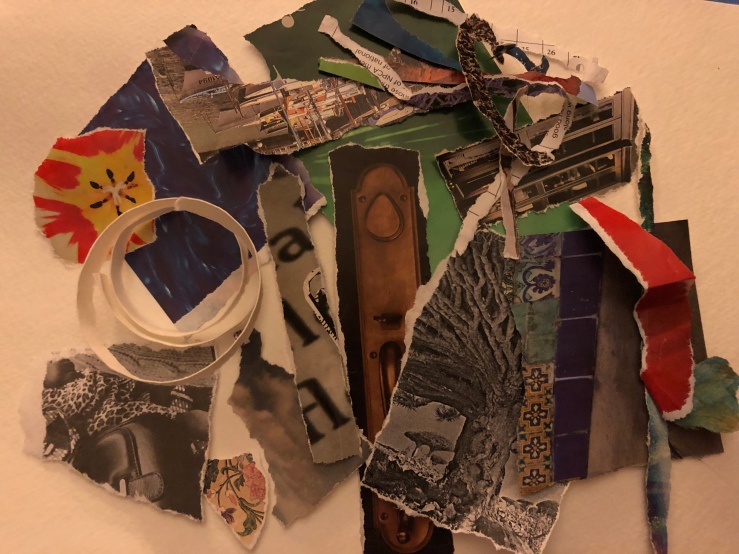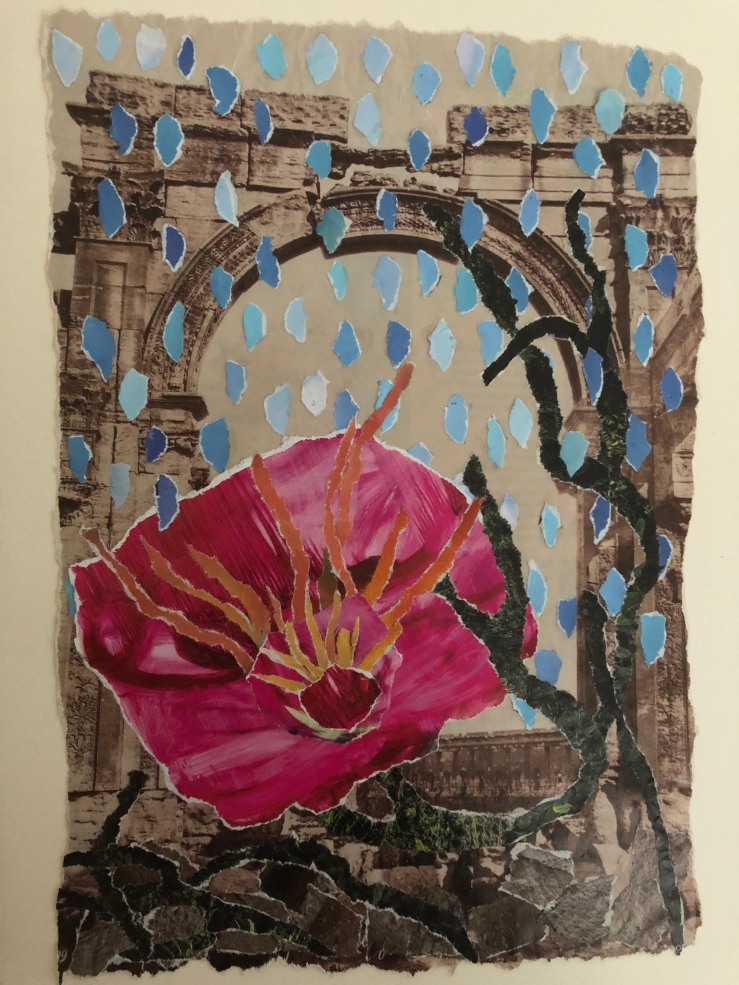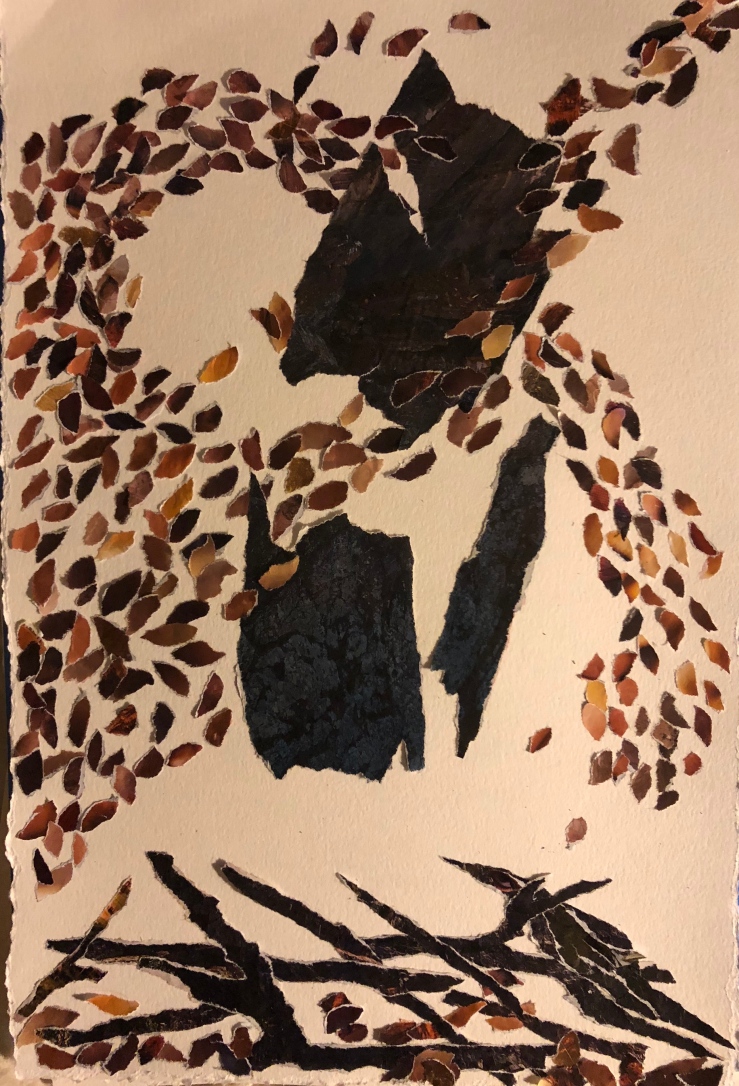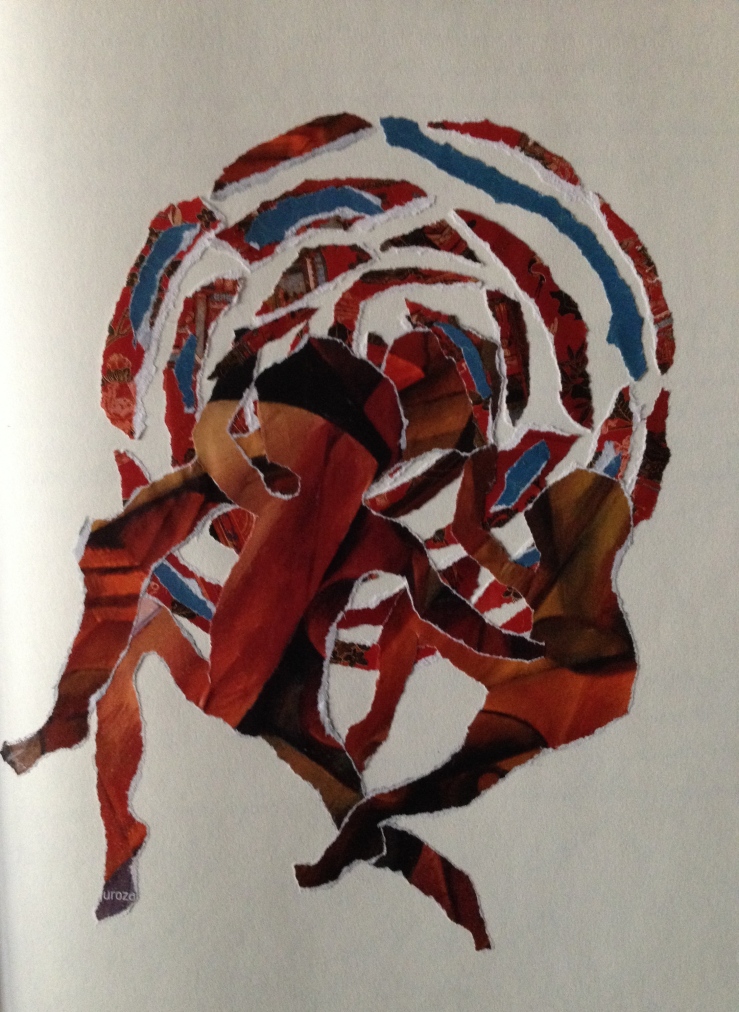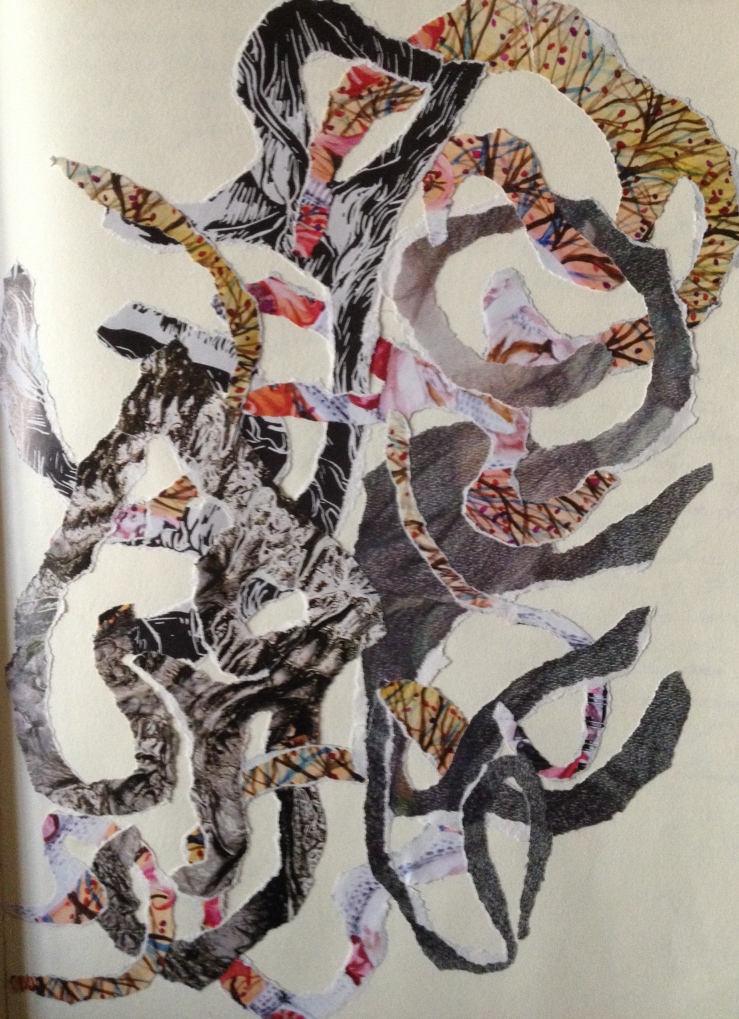I’m from paper and pencil time. This was when backpacks were overflowing with looseleaf papers that had torn away from three-ring binders because it was also the time before the invention of the reinforced looseleaf tabs. Dividers, made of thicker paper lasted a bit longer but would inevitably also tear away from the binder and contribute to a chaotic nest of papers full of penciled-on words corrected in red pen.
In paper-pencil time, we collected stationary with matching envelopes that we would bring in to school to show each other. Snoopy, Holly Hobby, unicorns, rainbows, Hello Kitty and so on. In paper-pencil time, we wrote each other letters during summer vacation and also made our own stationary by decorating the margins of white or loose leaf paper as well as the backs of envelopes to match. It was also a time when we designed our own bookmarks and used a hole-puncher to make a small hole at the top to string a decorative piece of yarn through. I remember making a book of bookmarks with my friend Kate that held different sized bookmarks to sell and which we priced anywhere from five cents to twenty-five cents.
In paper-pencil time, chewing pencils was a thing for some kids. I wasn’t sure why they did that and it grossed me out, although I did bite into a pencil once to see what all the fuss was about.
Erasing was rigorous during paper-pencil time and whiteout was not a thing, so we all, at one time or another, found ourselves biting the small metal top of our pencils to try to squeeze out more of the eraser when it wore down.
We wrote pages and pages of homework that always contained the ghost markings of erased words, thoughts, and misspellings. You see, one could never fully erase the blunder so we just did the best we could with our molar-marked pencil erasers. How teachers read our penmanship was beyond me although there was this girl, Erica who had neat and perfect penmanship that matched her perfect, neat, beautiful clothes and her perfect long nails. Her bedroom is probably really clean and organized, I thought to myself. The rest of us belonged in third grade while Erica seemed like a small adult; a kid with an old soul who was kind to everyone but probably screaming inside, Lord get me away from these pencil biters who can’t even get through one sentence without erasing anything!!
Our teachers had this strange paper that allowed them to make copies. My mom and my older brother just recently jarred my memory when they helped me recall this memory of what was called Mimeograph stencil paper; used to write out our assignments which were then copied using the weird machine in the front office. I thought it was some kind of carbon paper but when my mom wrote the word Mimeograph in an email to me, all I could hear was Mrs. Lowey’s voice and I freaked out and immediately called my brother who is two years older than me. My brother held this memory with all of his senses as he described the paper, its blue ink, the sound of the machine and the awful smell of rubbing alcohol on the assignment sheets that were handed out to us. As I listened, my eyes grew wider and all I could do was smile because he brought it all back to me over a phone call, taking place between New York and Florida.
There was no erasing on the mimeograph paper so the teachers could not make any mistakes otherwise they would have to just cross the word out and continue. I remember getting my legal size page of whatever the teacher had copied and handed out. I remember Mrs. Lowey filled her paper up with so much information that I could never read it all. It was just too much to read and the writing was messy and hard for me to decode quickly. Mrs. Lowey was not Erica. Mrs. Lowey was messy and loved giving us messy art projects. I loved Mrs. Lowey because I knew her house was messy.
Flour + Water + Newspapers = A Mess
Once a year on May 1st we decorated trees in Riverside Park. They called it May Day and it was a celebration of Spring that we commemorated by picking themes and making paper decorations to hang on trees. I remember one year our class theme was birds and another year it was fairies. I remember the whole school walking down the city streets to the park each of us holding our paper offering to Spring, and I remember dancing the May Pole dance which was organized by the dance teacher, Mrs. Gottfried. Yes, it was a time of paper, pencils and Pagan rituals at PS 75 — the good old days when teachers could swing open the school doors and walk hundreds of kids through city streets to a park.
Years later I thought about the May Day activities in the park and wondered how long it took for the winds and the rains to erase all of our paper creations. Like in some surreal film, I imagined the colors made with markers, crayons and Tempra paints, washing off and staining the grass below in rainbow colors. I imagined the glitter and feathers flying through the air and over the Hudson River while birds carried off long strands of yarn for their nests. I guessed that whatever faded papers were left became soggy with the summer rains then brittle with the summer heat until the fall winds came in to yank them off the naked limbs of the trees and send them off toward New Jersey.
When my papers came back to me with corrections in red pen, I was ashamed. I had gotten much wrong, written incorrectly and erased too much. Most days, I just shoved the looseleaf paper in my bag with the others and just continued without understanding. The red pen markings seemed as if they were done in anger and frustration and I did not want anyone to see my paper. The pencil eraser could not erase the angry red pen.
My own perceptions, at the time, were often driven by internal dialogs that scripted all the roles in order to justify feelings of failure, confusion or sadness. I suspect that most kids do this; setting up the foundation for the creation of the masks we put on and take off throughout our lives. These are the masks we wear to hide from what we are not sure of so as to make others perceive us differently.
D: [inner voice] Was I supposed to know that? I must have not been paying attention. Now the teacher is angry and she thinks I’m stupid.
D: [responds to friend after shoving the paper in her backpack] Oh, hi. Did I get my paper back? Yes, I did and the teacher liked my story. Yay, it’s almost lunchtime. You wanna play jump rope today?
Thinking all the time about things, random things, made up things, while not paying attention to what the teacher was saying, or not listening because I was trying to read the entire handout with all the instructions for the whatever project. Too much information does not help me. Can you just tell me in two sentences what you need me to do?
In an effort to teach children how to be organized, grownups often forget that there will never be more than one Erica in their class. The other twenty-five children are not concerned with reading a fifteen-part instructional worksheet on how to do a book report. Out of the twenty-five, ten are thinking about where the last episode of the Land of the Lost left off, five are hungry and thinking about lunch, two got no sleep the night before and are dozing off, four look attentive but hear nothing the teacher is saying, three are biting their pencils and one is staring out the window. Keep it simple.
- Read the book
- Write about your book
- Draw a picture
Our school publication was called “The Spicy Meat Ball” and it was where Mrs. Lowey compiled and published our poems, our stories and our drawings. This meant that someone had to type everything out on a typewriter and not make any mistakes and that all the artwork had to be traced onto another paper with the carbon backing so copies could be made. I had no idea who made this happen until just recently when I found my copy of “The Spicy Meatball” and read the front page:
Spicy Meatball
The Literary Magazine of P.S. 75
Poetry and Prose Editors: Hannah Brown and Phillip Longate
Art Editor: Ruth Lacey
May 1979 Published by Teachers and Writers Collaborative
As a school-wide project, The Spicy Meatball gave us a place to put our unmasked selves. Silly stories, sad thoughts, things that seemed to make no sense, et cetera, were published along with pencil-drawings and doodles. Getting my copy of The Spicy Meatball was always exciting to me because I knew I could turn to the pages with my writings and I could see my name printed under them.
May 1979
Scattered bright lights in
a building window in a grayish night.
Roofs have snow and the city with happy bright lights.
Shades of night all around.
Dark alleys with dark blue colors. A very melancholy day
with a grayish sky and the
streets all wet.
– Damaris Ferrer
Of course, now as an adult, I can appreciate what the children of P.S. 75 wrote about during this time of paper, pencils and pay phones, and I was not surprised by my small contribution that spoke of the environment and my own changing moods. For the most part, the writings in The Spicy Meatball sampled the honesty in children via both loud and soft voices without the interruption of the angry red pen and thus allowing us to just BE.
Oh, world, world
Did you
remember
How you
hate me
When I push
you.
Did you remember
How you love me
When I read
to you
And you would be
saying please
oh please?
Oh world, world
I know you
love me!
–TB
My copies of The Spicy Meatball have always been spared the throwaway pile that has been created each time I have moved. How could I think of throwing away all those thoughts from all those souls? And besides, someone took the time to make sure that they typed out all of our writings without any mistakes!! This alone is a big deal and merits the preservation of such a publication along with the memory of said type writer which probably did not have that nifty back-erase button that was invented later as a major feature on those giant fancy IBM typewriters.
The moment of the typo/mistake/blunder is a moment when the brain is moving faster than the hand. It is when the dictating voices in our heads ramble on with no regard to the 27 bones holding the writing implement and while we are taking cues from the eyes. That’s the problem with those of us who take too much in: we think we are writing something when in fact we drift off in spurts which results in the omission of “and” – “it” – “the” or we end up writing a word twice.
The day was bright and sunny until clouds darkened th sky making it seem as if someone drew the shapes on the windows. We felt a rumbling under our feet although it came from up above so we ran and and ran until we laughed because the water fell in fuckets upon us
I am sure that carbon paper and typewriters made people focus like never before.
Today we have auto correct and that wonderful delete button; neither of which prevents us from eventually drifting in and out of that world between sleep and reality during those late hours on the computer. Yes, we can get so much more done now so who needs sleep.
The day was bright and sunny until clouds darkened the sky making it seem as if someone drew the shades on the windows. We felt a rumbling underrrrrrrrrrrrrrrr our feet although it came frommmmm sandwiches up above so we ran and ran until we laughed because the water fell in bucxstes upon us. There was no reeeeeeeazoun tew rum anymore now tyuidjkashagsfscdbdbdndmcejemsssssssssssss
Defrost meat and buy milk hutyuweeemmmm weeeeeeeeeee
What is that world we enter and why can we only get to it when we are beyond exhausted? In that world we float, see through walls, converse with the dead and run from stampedes of elephants while waking up to quickly check-in and tell ourselves that we are okay to finish our document. It is in that world of complete exhaustion that our minds can tap into those unused parts of our brains that open us up to everything invisible and not attainable in our “normal” state of existence. And it is in this state that we are finally open to receiving blissfully without the voices of opinion, judgment and doubt. In this other dimension, we feel the hundred foot free fall and live to tell others what that felt like.
How is it that such vivid experiences can be retold when one awakens, yet the details begin to fade away the longer we go without recounting it? How is it that you are unable to recall the very words you wrote down about a dream from long ago despite seeing it is your own penmanship on the page? Does it all get erased or is it simply pushed back by everything else that we collect in our thoughts?
We don’t really need three rolling pins, nine serving trays and five bottle openers. And why do I need forty-seven tee shirts? Sometimes it’s just nice to have semi empty drawers.
Small children have no need for bottle openers or rolling pins and therefore have space to drift off as light as feathers to wonderful places. In fact, if grownups would stop interrupting the daydreamers and simply learn to wait for their return, they would see that the daydreamers have much to tell about, write about, and draw about.
We lived between worlds,
when we were children
that is.
But alas, we grow up with the belief that these brief departures are bad and that we ourselves must interrupt even ourselves in order to “check-in” on our important documents because they must be perfect for their forever preservation on some other cloud.
My tangible copy of The Spicy Meatball smells like old paper, which is to say that I am holding the past — a past when ink on paper had a smell. Old things smell old because they are an accumulation of many years, and contain stories, secrets and energies that have sunken into their porous make-up.
“Where is the paper with the assignment?” I ask my son. Then he hands me his laptop that holds all of his “papers”. There is no mess in his backpack, no torn looseleaf pages, no torn subject dividers. I am happy that he does not carry this burden, yet I am sad that he won’t accumulate the feelings and smells of past-time and places through the tangible.
A different kind of erasing, I guess.

[Written excerpts and collage images from Loose and Connected Thoughts, my life in fragmented time by Damaris Iva Ferrer Santana]
